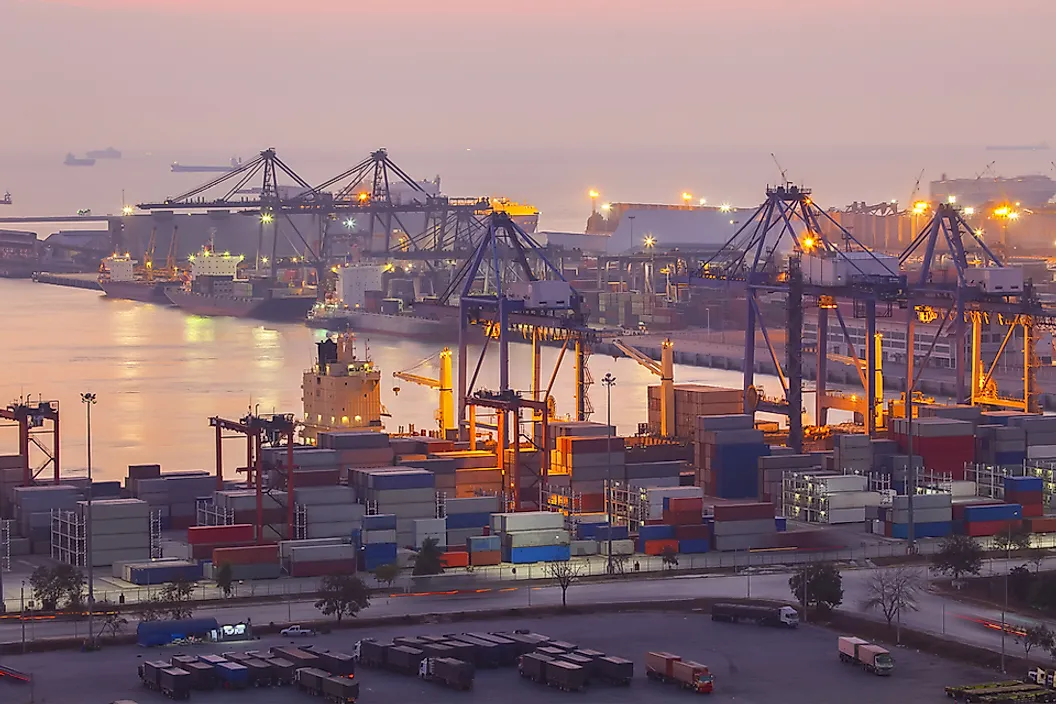The Biggest Industries in Thailand

Thailand is a nation located in Southeast Asia, and is the second largest economy in the region. The country has a gross domestic product (GDP) of $404.824 billion, which has a purchasing power equivalent of $1.108 trillion. With a population of 67.2 million, Thailand's economy has a large workforce, and the average GDP per capita is $5,771 (equivalent to $15,319 when considering market purchasing power). Thailand's economy has grown significantly over the past several decades and the country has decreased its poverty rate from 65.26% to 13.15% between 1988 and 2011. In addition to a healthy interior economy, Thailand also participates in the global market. In fact, Thailand has the 20th largest export economy in the world. Its biggest export receiving countries include: the United States ($28.6 billion), China ($28.5 billion), and Japan ($20.3 billion). The remainder of this article examines some of the biggest industries in Thailand.
Small or Medium-Sized Enterprises
One of the most important components of Thailand's economy is its large sector of small or medium-sized enterprises (SMEs). SMEs are one of the biggest contributors to Thailand's GDP. In fact, in Thailand SMEs far outnumber larger enterprises, making up 99.7% of businesses operating in the country. As of 2013, these businesses generated around 37.4% of the total GDP. This percentage represents a small decrease from 2002, however, when SMEs contributed 41.3% of GDP. Additionally, these organizations also provide just over 80% of the formal employment sector.
SMEs in Thailand are responsible for importing more goods than exports. Economists attribute this to the fact that the manufacturing industry has declined over the last few years, which means fewer goods are being produced for export. Slightly more than one-third of the employment provided by SMEs in Thailand occurs in the trade, service, and manufacturing industries.
Industry and Manufacturing Sector
The industry sector (the majority of which is managed by the SMEs described above) is one of the largest contributors to Thailand's total GDPO, with a value of 43.9%. Within the industrial sector, manufacturing is the most productive, contributing 34.5% of the GDP. Additionally, the industry sector is responsible for providing approximately 14% of formal jobs in Thailand. Between 1995 and 2005, this industry experienced a moderate growth rate of around 3.4%. In recent years, however, reported growth is slower. The two major categories of goods manufactured in Thailand are automotive and electronics.
On average, Thailand produces roughly two million vehicles every year, making it the largest automotive industry in Southeast Asia. The majority of cars and trucks manufactured in Thailand are international brands, like Ford, Volkswagen, Mercedes, and BMW. In addition to cars and trucks, Thailand also produces and exports automotive parts. The combined export value of these three types of goods was reported at $23.74 billion. Taken individually, trucks comprise 4.7% of total exports, cars make up 3.7%, and automotive parts make up 2.7% of the total exports leaving Thailand.
The electronics manufacturing industry in Thailand produces the largest percentage of exported goods, and accounts for 15% of total exports leaving the country. These exports are worth approximately $55 billion. Additionally, this specialized industry provides 12.2% of manufacturing jobs in Thailand. Within this category, computers and integrated circuits are the two most widely exported goods. Computers make up 7.9% of all exports, at a value of $18.3 billion, while integrated circuits make up 4.2% of all exports, at a value of $9.8 billion. Thailand is also the world's second largest producer of hard disk drives.
The third largest export from Thailand is the plastics and rubbers category, which accounts for $24.9 billion worth of total exports. This is followed by food, which exports approximately $17.4 billion worth of goods each year. Major food items produced in Thailand include processed fish and raw sugar.
The Services Sector
Another significant part of Thailand's economy is the services sector, which contributes nearly half of the total national GDP (44.7%). The sector can be divided into a number of specialized industries, including finance, health, tourism and hospitality, retail, communications, and banking. These services provides jobs for 37% of the formal labor force, and are considered the key to future economic growth in Thailand.
The importance of the services sector to the growth of Thailand's economy is due to the fact that other sectors (like industry and manufacturing) also depend on it for survival. For example, while Thailand may produce a large number of cellphones in its manufacturing sector, the value of this industry comes from extra services, including distribution, retail, and customer support. All of these extras belong to the services sector. Since this sector is filled with low productivity and low skilled workers, it has significant room for growth and improvement, which would be beneficial to the economy as a whole.
According to some economists, the way to make this potential a reality is to involve both the government and private sectors. These experts believe a joint effort in regulating quality would result in improved standards. Improved quality standards would in turn result in increased output, thus driving further growth in the sector. This change must occur simultaneously with reduced restrictions on trade policies to make it easier for businesses to operate, encouraging growth and investment in Thailand.
Tourism is one of the strongest industries within the services sector, producing approximately 17.7% of the total GDP, and has demonstrated steady growth over the last few years. This growth is expected to continue in the future. The tourism industry contributes an average of only 9% to national GDPs around the world, which highlights the significance and strength of the tourism industry in Thailand's economy.











